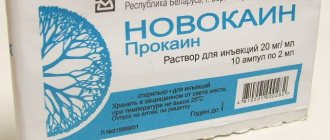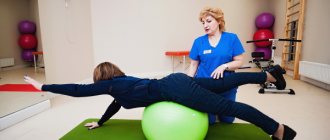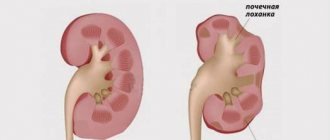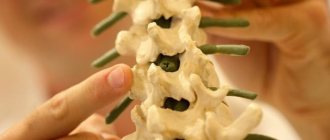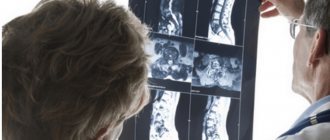Pain in various parts of the spinal column is an integral symptom of many diseases of the musculoskeletal system. A wide range of medications are used for relief, but with severe pain, sometimes it is necessary to resort to more powerful and fast-acting drugs.
The blockade of the cervical spine is carried out for therapeutic and diagnostic purposes. Manipulation involves injecting the drug directly into the painful area. On the one hand, the medicine turns off one of the links in the pain mechanism, and on the other hand, it allows the doctor to understand that the pain syndrome is caused by a pathological process in the spine.
General information about the procedure
A cervical plexus block is an invasive injection of an anesthetic (novocaine or lidocaine solution) into the neck area to relieve a pain attack. The blockade may also include other medications, liquid vitamin complexes and other components included in the therapeutic regimen.
The mechanism of action is to block sodium channels in nerve endings. Impulses in cells arise due to the difference in electrical potential in the membrane itself and outside. Under the influence of an irritating factor (pressure, other impulses, etc.), the cellular potential begins to change. At a certain stage, sodium enters the process, which also participates in the formation of the impulse.
Novocaine and lidocaine are replacement sodium channel blockers. When they enter a cell, they suppress the conduction of a nerve impulse.
Pain syndrome is nothing more than a powerful impulse sent by cells to the brain. When nerve conduction is suppressed in a certain area, the pain disappears. The choice of blockade agent depends on the nature of the pain. Lidocaine acts faster and stronger, so it is used for emergency pain relief. Novocaine works more slowly, but the effect lasts longer, so it can be used to eliminate long-term pain.
No ads 1
Novocaine and lidocaine blockades have been practiced by neurologists and anesthesiologists for many years. To perform the manipulation, the doctor must be well aware of the location of the nerve roots and their projection on the body, so inexperienced specialists, even if they have a certificate, are not allowed to perform the procedure.
The blockade is performed using sterile instruments - a syringe and a special thin needle, the diameter of which allows it to easily enter the tissue adjacent to the spine. The injected solution must be strictly sterile, not expired, therefore, if there are any external changes (turbidity, flakes, etc.), it is impossible to determine the date of manufacture, or if the storage conditions are not met, it is strictly prohibited to use it.
The blockade is performed by an anesthesiologist, surgeon or neurologist in a sterile hospital environment (procedure room, small operating room). The doctor is assisted by a nurse or nurse anesthetist. In case of severe pain, it may be necessary to fix the patient, as there is a risk of needle breakage.
The procedure does not take much time, but requires the appropriate qualifications of a doctor
Potential and therapeutic success of facet joint infiltration:
On the one hand, periarticular infiltration of the facet joint is the optimal treatment for acute pain and discomfort in the facet joint area, as well as the successful treatment of the corresponding dermatomes of the spinal column. With the help of this infiltration technique, it is often possible to relieve acute painful conditions, providing sufficient opportunity for subsequent conservative therapy. The point at which the pain-free interval is reached serves as the so-called “therapeutic window” during which appropriate physiotherapeutic and training treatment can be successfully carried out. In addition, periarticular infiltration of the facet joints serves as a diagnostic tool that allows one to adequately assess the prospects for the success of further therapeutic measures, such as, for example, appropriate stereotactic thermal denervation or subsequent surgery.
Indications for use
Lidocaine blockades are widely used for pain syndromes associated with diseases of the musculoskeletal system. The procedure is also used for minor surgical interventions.
In what cases is a blockade placed:
- severe pain due to pinched nerve roots;
- a painful attack interferes with the implementation of diagnostic measures;
- anesthesia for minor surgical interventions when general anesthesia is not required;
- joint administration with medications and vitamins.
No ads 2
Neck pain often occurs with diseases such as cervical osteochondrosis, osteoporosis and other pathologies of the musculoskeletal system. Discomfort negatively affects the general condition of the patient, significantly reducing the quality of life. Blockades with anesthetics are a universal treatment for spinal diseases and prevent the development of other painful symptoms.
Usually a course of several procedures is prescribed, which are included in the inpatient treatment program or are performed during an outpatient visit to a health care facility. The first option is preferable, when the patient is continuously under the supervision of medical workers and, if the condition worsens, can receive help in a timely manner. In some diseases, for example, with an intervertebral hernia, the patient experiences severe pain, which interferes with diagnostic measures (radiography, ultrasound).
In order to normalize the condition, a blockade is performed. A contrast agent may be injected along with the solution, which improves visualization of the damaged area. Minor surgical interventions that do not require deep penetration into tissues are also performed with novocaine blockade. For example, this is how wen on the neck and some benign formations are removed.
Blockades are indicated for older people with diseases of the cardiovascular system who, due to their physical condition, cannot tolerate anesthesia.
The blockade is carried out with a special thin needle
Therapeutic blockade is a combination of vitamins and medications. The composition is injected directly into the cervical spine, due to which the effect occurs as quickly as possible.
Our expert:
Dr. Hanns Hartzmann
M.D.
Dr. Hanns Hartzmann, Chief Physician of the German Olympic Football Team, Basketball Club Bayern Munich. Certified massage therapist, physiotherapist, osteopath and surgeon - a specialist in conservative and minimally invasive treatment of the spine and injuries of the musculo-ligamentous system. Previously, head of the department of spine surgery at the University Hospital of Munich. Features: a unique combination of special knowledge and experience working with the musculo-ligamentous system as a practicing massage therapist and osteopath, as well as many years of experience in performing spinal surgeries as a surgeon.
Contraindications
The decision about the possibility of placing a blockade is made by the attending physician, focusing on the patient’s medical history, the results of laboratory and instrumental examination methods. There are absolute and conditional contraindications for use.
The first include:
- history of epileptic seizures;
- severe liver dysfunction;
- hypersensitivity to the anesthetic used;
- severe diseases of the cardiovascular system;
- various neurological pathologies.
No ads 3
The blockade is contraindicated for epileptics, since the procedure can cause spontaneous neuronal activity and thereby lead to a new attack. Such people are prescribed alternative methods of pain relief - local anesthesia and medications.
Most often, lidocaine is taken for blockade.
An unpredictable reaction after the procedure can also develop in a number of diseases of the nervous system. The effect of the drug on nerve tissue can cause increased pain, spasms, convulsions and adverse events. In people with dementia, interruption of the nerve impulse can cause destruction of the myelin sheath. The drugs used for blockade are metabolized in the liver, so diseases such as hepatitis, cirrhosis, and fatty liver are contraindications.
Relative contraindications include:
- changes in bone structure;
- inflammatory processes on the skin;
- the specificity of the diseases for which the blockade is prescribed.
The potential effect depends on the location of the puncture, so the doctor must have extensive experience and have a refined manipulation technique. The consequences of incorrectly performing the procedure, ignoring contraindications or non-compliance with the rules of asepsis and antisepsis can be very different, including purulent inflammation of the spinal membranes and death.
It should be borne in mind that blockades with hormonal anti-inflammatory drugs and vitamins (B12) relieve pain only temporarily and do not affect the long-term results of therapy and the prognosis of the disease. Epidural anesthesia does not reduce the number of patients requiring neurosurgical treatment, and this technique is also ineffective in the absence of vertebral disc herniation and spinal canal stenosis.
What are the most common causes of the so-called facet syndrome?
Back problems, also described as facet syndrome, are caused by wear and tear of small segments of the vertebrae of the spinal column. The lumbosacral spine is most often affected, but the cervical and thoracic spine can also cause similar symptoms. In this case, the cause is not necessarily age-related arthrosis. Unnatural stress experienced by younger people in everyday life, or even intense leisure activities and sports activities can also cause similar early wear and tear symptoms.
Typical symptoms of the so-called facet syndrome are local, partially encircling pain at the level of the affected facet joints. The classics of the genre are the so-called problems that arise at the very beginning of the movement, i.e. pain that occurs after long periods of rest/immobility - lying, sitting or standing. It is usually found that such pain may disappear after an individual - short or longer - period of “pacing/warming up”, and sometimes may even be completely absent during periods of physical activity. In older age groups, a classic sign of the so-called facet syndrome is the typical morning stiffness of the corresponding parts of the spine. In some cases, these girdling pains can spread along the iliac crest and up to the thigh. The so-called facet syndrome is also characterized by irradiation of pain to the groin area. Occasionally, these pains are also accompanied by superficial numbness (paresthesia) of the thigh surfaces.
Manipulation technique
The patient stops eating three hours before the procedure (the snack should be light). If the patient is being treated on an outpatient basis, it is better not to come by car, as coordination may be impaired after the administration of the anesthetic. The patient is placed on his stomach, the puncture site is exposed (neck area).
A hard pillow or cushion is placed under the head end. The doctor examines the skin and palpates to identify lumps and other formations. If no changes are found, the skin is disinfected with an antiseptic.
The manipulation is carried out in compliance with all the rules of asepsis and antisepsis.
The required amount of substance is drawn into the syringe, the rest of the volume is filled with saline solution. Next, the injection site is processed again, after which the needle is inserted with a gentle movement. A cotton ball moistened with alcohol is applied to the puncture site. The patient should lie down for another five minutes, then be observed by a doctor for half an hour. According to patients, the analgesic effect occurs almost immediately.
Reviews
Irina: I was given a novocaine blockade. There was no effect at all! Only surgery helped. I believe that this procedure is only suitable for short-term emergency care.
Svetlana: I was saved only by a course of lidocaine blockades; I visited the hospital for a total of two weeks. Before that, I couldn’t do anything at all: I couldn’t sleep, I couldn’t move normally. I had terrible pain in my neck.
Marina: My husband had osteochondrosis and had the vertebrae in his neck realigned, and then a blockade was prescribed. In addition to the anesthetic, hormones were administered. He only got worse! He complained of headaches, dizziness, and his blood pressure began to rise. As a result, I underwent a course of massage and physiotherapy, and my condition improved.

